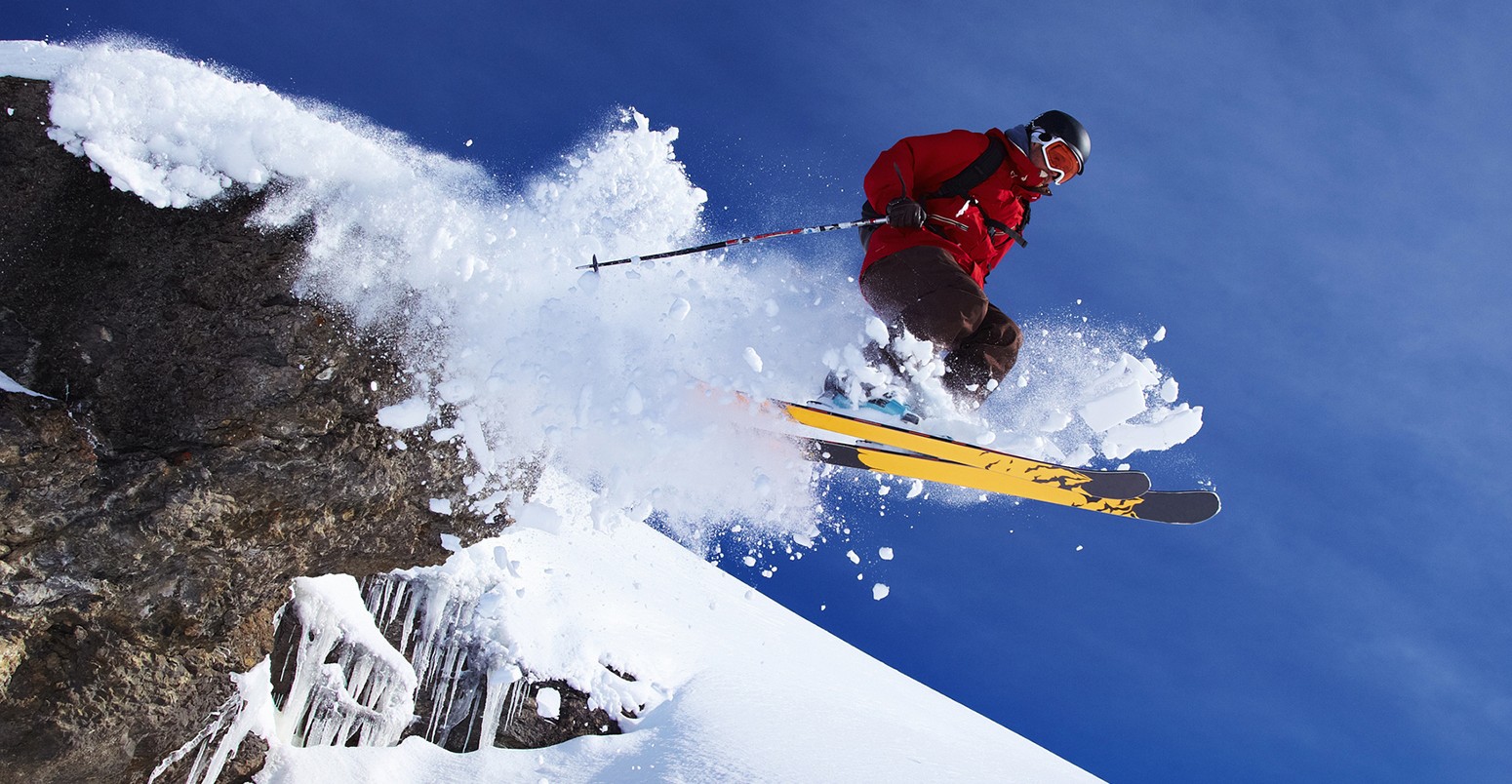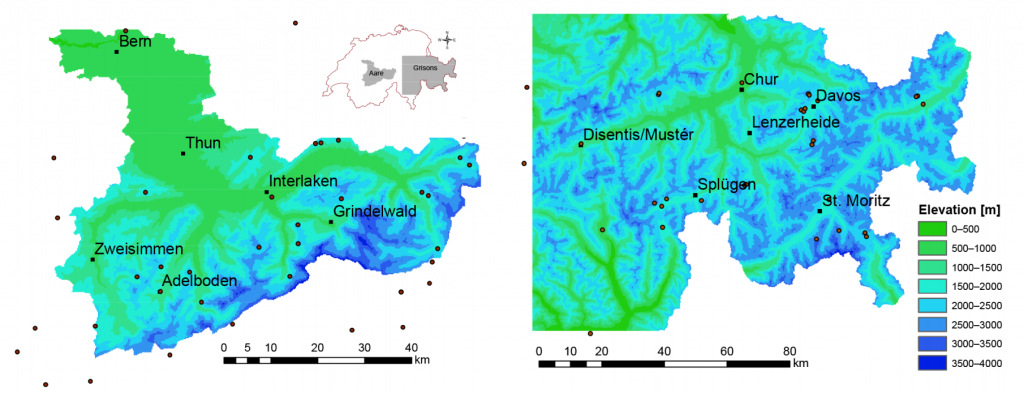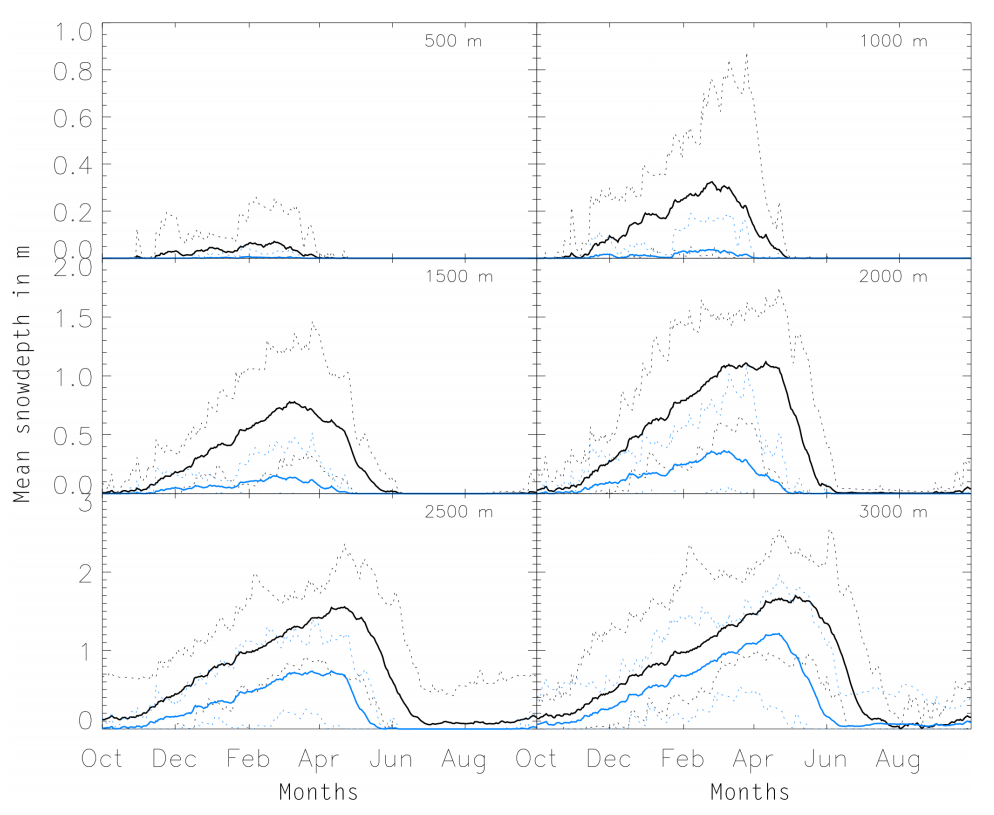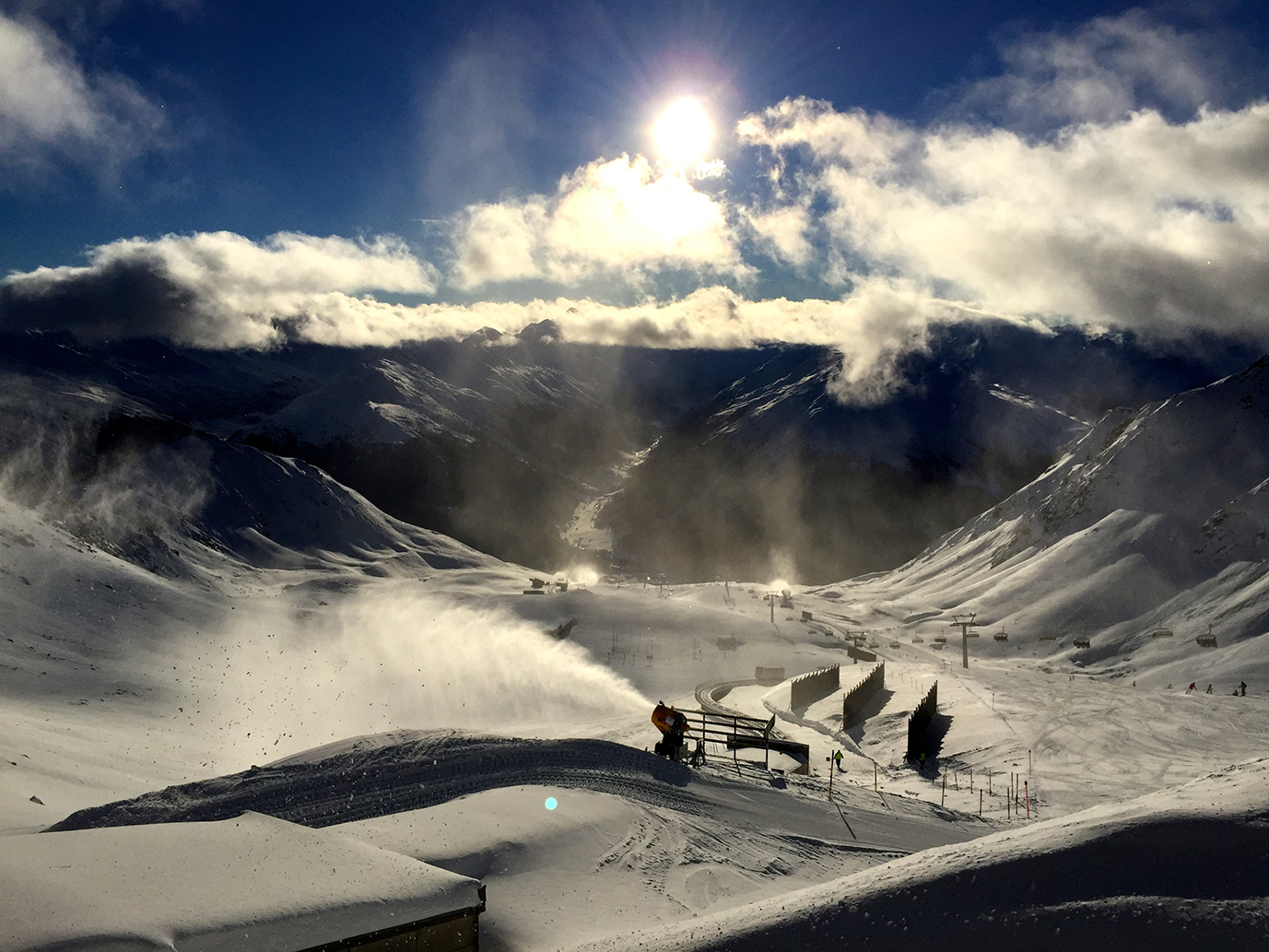
Swiss ski resorts could see 70% drop in snow cover as climate warms
Robert McSweeney
02.16.17Robert McSweeney
16.02.2017 | 3:02pmSkiers heading to the slopes of the Swiss Alps could find the ski season increasingly curtailed by a lack of snow, a new study says.
The research, published in The Cryosphere, suggests that the pristine white pistes of Switzerland could see an average 70% reduction in the depth of snow cover by the end of the century if greenhouse gas emissions aren’t curbed. For ski resorts at lower elevations, this might mean no snow at all.
However, declines in snow depth could be limited to 30% if global temperature rise is kept to no more than 2C above pre-industrial levels, the researchers say.
Snow depth
The Alps is the biggest ski destination in the world (pdf), accounting for 44% of global ski visitors each year. At its heart is Switzerland, home to some of the world’s most famous ski resorts, such as St Moritz, Davos and Verbier.
The study focuses on two regions of Swiss Alps: the Aare in central Switzerland; and the Grisons in the east, shown in the map below.

Location and elevations in the Aare (left) and the Grisons region (right). Elevations are shaded blue for high and green for low. The dots mark the weather stations used in the study. Source: Marty et al. (2017)
Using data collected from 82 weather stations and three different climate change scenarios, the researchers simulated snow cover in the two regions through the 21st century.
In the first scenario, worldwide CO2 emissions are halved by the middle of the century and global temperature rise is likely to stay below 2C since pre-industrial levels. The paper calls this scenario “RCP3PD”, but it is perhaps more commonly known as “RCP2.6”.
![]()
The other two scenarios assume no specific international effort to cut emissions, with global temperatures rising 2.2-4.9C by the end of the century in the “A1B” scenario, or 2.5-5.9C in the “A2” scenario (compared to pre-industrial levels).
The chart below shows the projected change in the average depth of snow on the ground for each scenario in the near, medium and long-term.
In the near-term, you can see that the projected decline in the thickness of snow is similar for all three scenarios – at around 20-30% compared to recent years. However, as the projections extend into the middle and end of the century, the differences become more marked. By 2070-99, for example, the projected snow changes in both Swiss regions are around 30% for RCP3PD (green bars), but nearer 60% and 70% for the A1B (red) and A2 (blue) scenarios, respectively.

Projected change in annual average snow depth (in %) relative to the baseline of 1999-2012. Chart shows projections for three future time periods: 2035 (2020-49), 2060 (2045-79) and 2085 (2070-99) and two regions of Switzerland. The bars show the median changes under each of the three emission scenarios. The blue dots show the range in results for the A2 scenario only. Source: Marty et al. (2017)
The driving force behind the deterioration of snow cover is increasing temperature, the paper says. Even increases in precipitation won’t compensate for the impact of the warming, the researchers note, as this will increasingly fall as rain rather than snow.
Elevation
Breaking the results down by elevation shows how much worse ski resorts at lower levels are likely to fare in future.
The charts below show monthly average snow depths for recent years (black solid line) and the end of the century (blue solid line) under the A2 scenario. While lower elevations (upper charts) already see substantially less snow than the upper reaches of the mountain range (lower), the impact of warming would likely see the end of a reliable supply of natural snow for skiing. The paper explains:
“The most affected elevation zone for climate change is located below 1200m, where the simulations show almost no snow towards the end of the century.”
For the Alps as a whole, around a quarter of ski resorts are located entirely below this altitude, the researchers say.

Monthly average (solid), maximum and minimum (dotted) snow depth (in metres) for the baseline period of 1999-2012 (black line) and the A2 emission scenario in 2070-99 (blue) in the Aare region. Results are shown for different elevations from the lowest (upper charts) to the highest (lower). Note that the scale of the y axis changes with elevation. Source: Marty et al. (2017)
For resorts where there is still enough snow for skiing, the projections suggest the average season will get shorter and shorter as global temperatures rise.
For example, the snow season at an elevation of 1,500m currently lasts around six and a half months, through the northern hemisphere winter and spring. This could be reduced to around four months by the middle of the century under the A2 scenario, the study finds, and then just two months – mid-December to mid-February – by the end of the century.
Drop in income
A declining supply of natural snow is likely to endanger the livelihoods of Alpine villages, the paper says. For some, as much as 90% of their economy depends on winter tourism.
In both Switzerland and the Alps more widely, the allure to skiers runs only as deep as the snow their skis carve through. A flurry of dry winters in Switzerland in recent years, for example, has seen skiers look elsewhere for their dose of powder.
In the early months of the 2016-17 ski season, for example, the number of people using ski lifts (an indicator of number of skiers) in Swiss resorts fell by an average of 13%. For destinations at low elevations, the recent lack of snow means facing “massive drops in income”.
It’s in these periods that ski resorts often rely on producing artificial, or “technical”, snow using snow cannon. Across the Alps, many places are already supplementing natural snow with artificial – including 36% of slopes in Switzerland, 66% in Austria and as much as 100% in some Italian resorts. This practise is water and energy intensive – and expensive.
Being able to produce artificial snow efficiently will become increasingly necessary as natural snow becomes less reliable in future, says lead author Dr Christoph Marty, a research scientist at the WSL Institute for Snow and Avalanche Research in Switzerland. He tells Carbon Brief:
“Skiing on natural snow will be more and more limited to a shorter season or higher elevations. The efficient production of technical snow will get even more important than today.”
On a more positive note, the results highlight the potential benefit to the Alpine skiing industry if global temperature rise is limited to no more than 2C.
Marty, C. et al. (2017) How much can we save? Impact of different emission scenarios on future snow cover in the Alps, The Cryosphere, doi:10.5194/tc-11-517-2017



